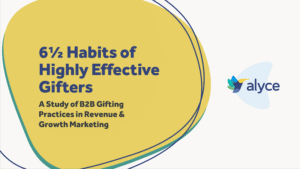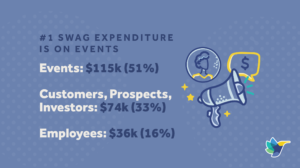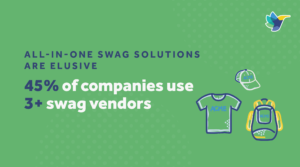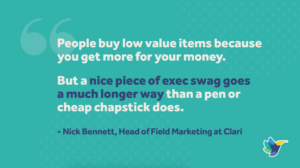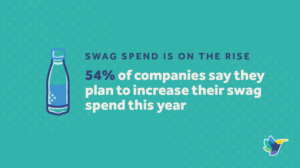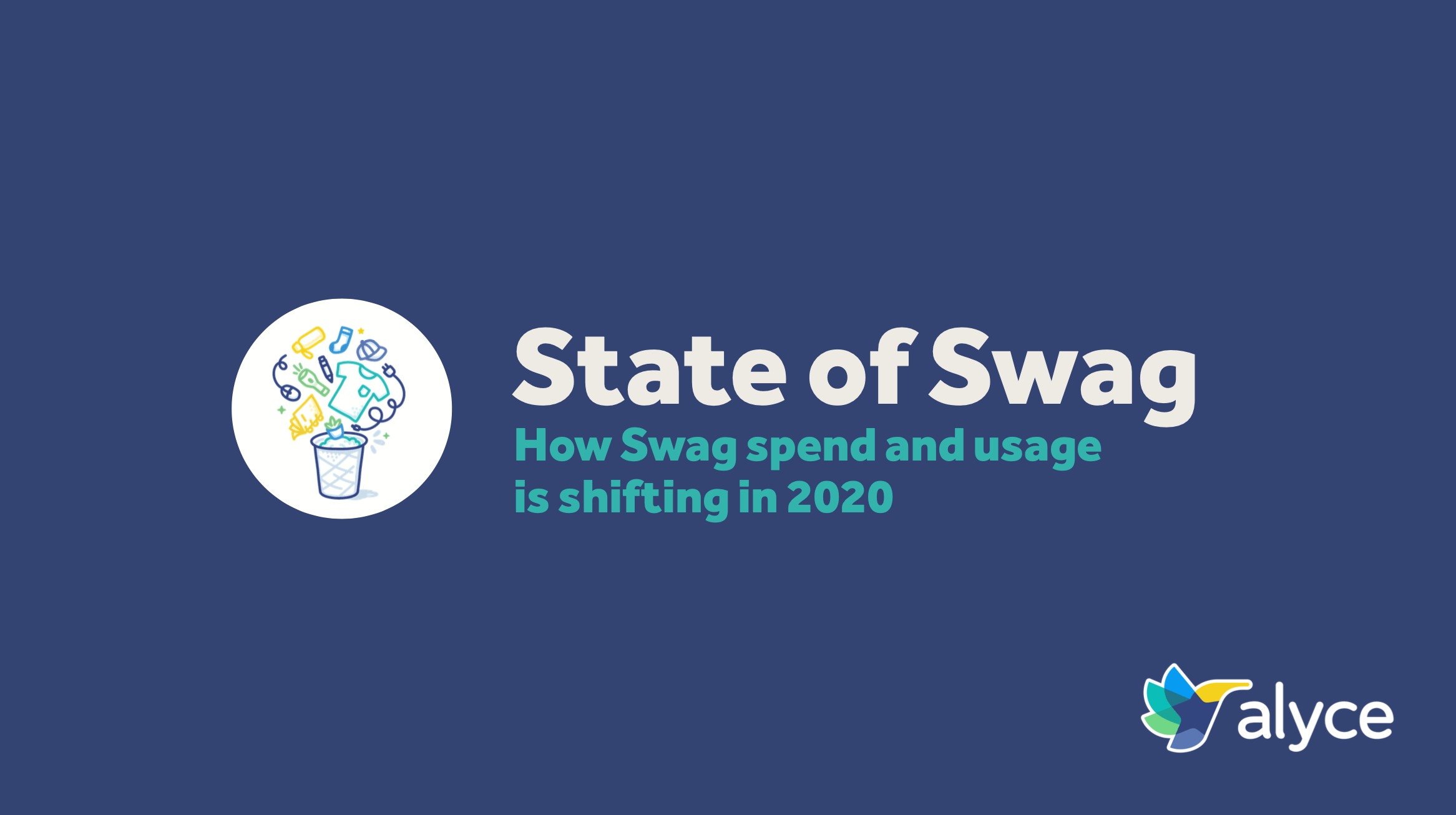
Alyce is on a mission to make every B2B interaction relevant, relatable, and respectful. However, one area of sales and marketing that we noticed had not lived up to those values over the last few years was swag management.
The way corporate swag has been used and managed by B2B companies has been a broken process for a long time. Prospects and customers don’t typically rave about their experiences receiving swag from other companies – after all, more times than not it’s just Stuff We All Get — and companies don’t particularly enjoy the tedious, costly, and highly manual processes involved with purchasing, managing, and delivering digital swag.
So we set out to learn a bit more about how branded swag is currently used and managed by B2B companies in order to understand these challenges more deeply, and learn more about what needs to change if companies plan to use swag going forward.
We surveyed about 200 B2B companies in order to:
- Understand how swag is most typically used by B2B companies
- Measure the range of spending for swag materials
- Profile the types of swag companies are investing in and why
- Understand the purchasing, management, and distribution process for corporate swag
- Gauge the future outlook for B2B swag
Especially given current market conditions and the suspension and cancellation of events and tradeshows, the findings of this report shine a bright light on the shortcomings of swag management, and the risks that companies are taking on by continuing to manage swag the way they have for years.
Events are the #1 Use Case for Swag… So now what?
Unsurprisingly, on average over 51% of a company’s swag spend each year is spent on events and tradeshows.
With basically every event and tradeshow canceled this spring, swag spend at tradeshows is especially top of mind. Marketers everywhere have pre-purchased thousands of dollars of swag inventory for events and shows that are no longer happening. This just highlights some of the major flaws with how swag is managed today. But eventually, events will be back on track. And when that happens, it will be more important than ever to make sure that you’re changing the way that you approach swag.
“At events, companies are not strategic about the items they provide. 80% just give stuff away and hope something good will come of it. That is not a marketing strategy.
They need to focus on selecting items that reinforce their message and incentivize recipients to opt in to marketing so follow up can occur.” – Jamie Bradley, Sophwell, Inc
The Biggest Issue: Managing Swag is Way too Tedious
Today, 45% of companies need to work with 3 or more different vendors to manage their entire swag program
Think about all the time and effort that goes into working with just one vendor.
You go to their website.
You set up at least one call.
You tell them your needs.
You get a proposal.
You negotiate the contract and fees.
You eventually come to an agreement, and you get the invoice.
Multiply all of that time and effort by three or more, depending on how many vendors you’re using.
And that’s before you even see any value at all.
That’s a pretty ridiculous amount of your time being taken up by menial tasks- time that could otherwise be spent on more strategic initiatives.
Nevermind the fact that 77% of companies still manage swag in their office.
That means those same people at your company that are ordering swag and managing all those vendors need to then manage all of the ordering, time and place of delivery, packaging, and shipping logistics for one-off swag sends and bulk ships to events and tradeshows. Again- way too much manual effort for your team.
Money Talks: You’re Not Spending Swag Money Wisely
On average companies spend over $185k annually on swag inventory alone. And 74% of companies currently spend money on low-value swag items over high-value items. Just the same as any other marketing channel, low-value interactions lead to low-value results. In other words- your company is throwing away money by spending on low-value swag like keychains and pens. We talked to a few industry experts to learn why companies choose this route, Most times its to increase your reach. But what’s the point in reaching more people if the impression isn’t lasting?
“People buy a bunch of low-value items because you can get more for your money. When that’s the case, people that take swag could care less about the company that is giving it out.
But if it’s a nice piece of exec swag, that goes a longer way than a pen or cheap chapstick does in my opinion. Wouldn’t you rather get a really nice vest or notebook that is of value then walk away with a slinky?” – Nick Bennett/span>
“The same reason that marketers resort to lower value media channels, and low-cost designers – they feel like if they can get more for less – they are getting a bargain. But, as we all know this is flawed reasoning.” – Robert Rose, Content Marketing Institute
Swag Spend is On the Rise
More than half of companies say they expect their swag spend to increase this year over last year.
Companies are looking to continue spending on promotional products and swag management software this year and are looking to spend more and more on it. But continuing to buy cheap swag that doesn’t make an impression will not be how your company cuts through the noise. Marketers need to be thinking critically about how to make your swag spend efficient and effective for the purpose you’re using it for. Don’t just buy swag because it’s what you’ve always done.
Create a strategy around how you’re going to scale that program to leave successful brand impressions and make the most out of the spend.
Some marketers are already thinking that way:
Over a third of marketers are investing in software to manage and scale their swag program right now.
To get the complete swag report, check it out here!




